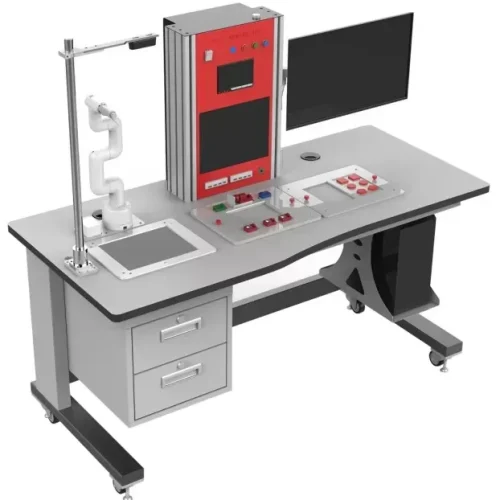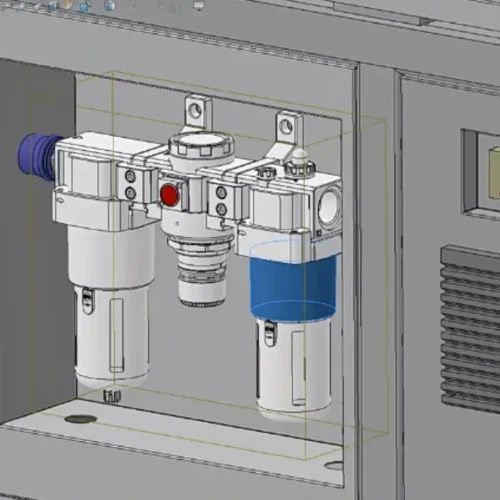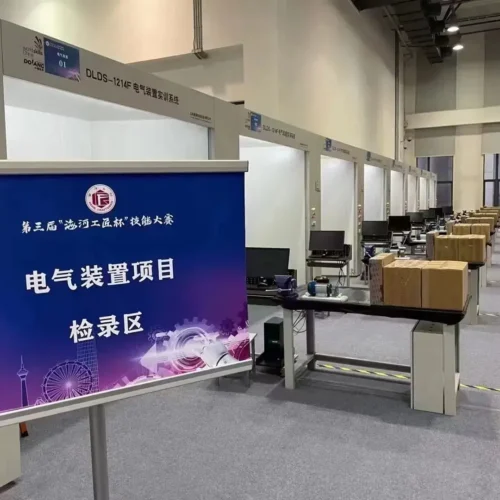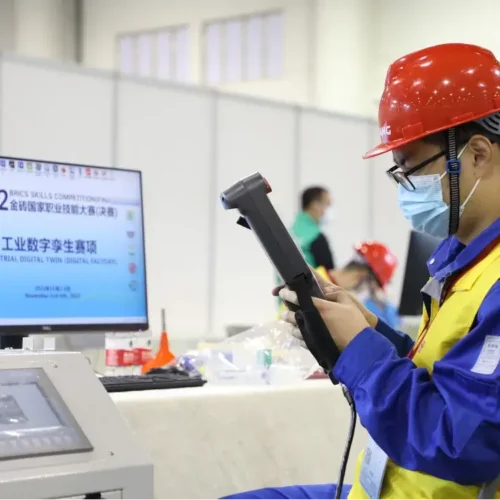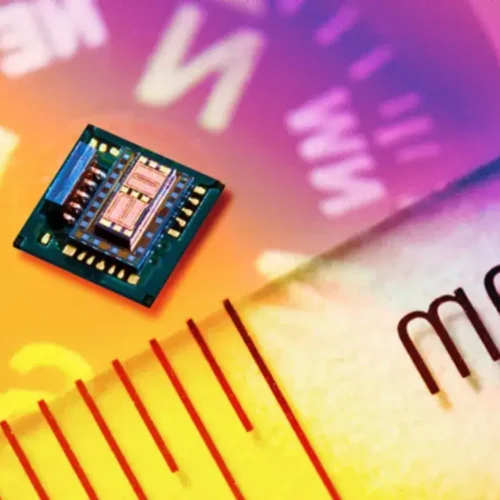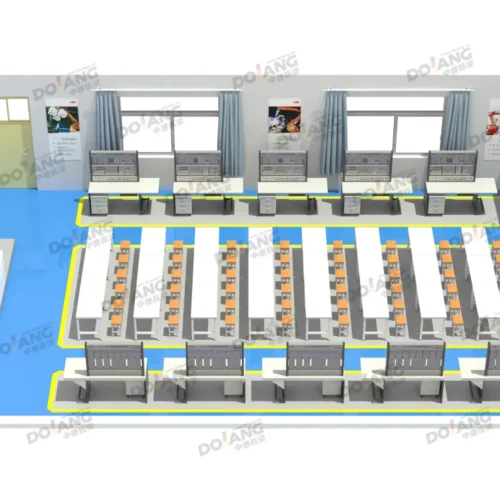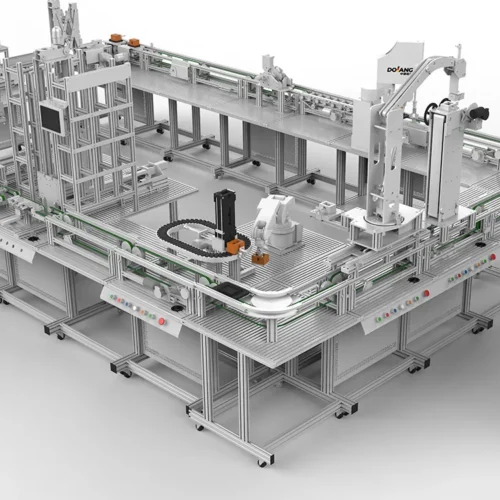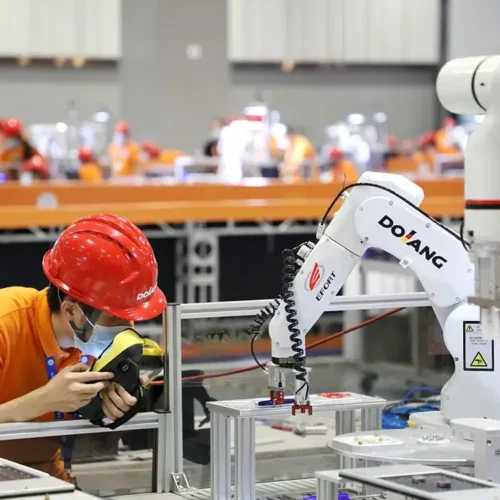Technology is a big boon to industries ushering in newer and innovative tools that enable seamless and successful operations. The digital twin technology is one such modern innovation. It helps to create a digital replica of an industrial device, process, or product. The main benefit is the optimization and enhancement of the physical component in real-time.
A digital twin technology training workbench enables the creation of a virtual simulation system. This system has real interaction functions based on the needs of the industrial operation. The key purpose of the training system is to create real production situations. It ensures realistic and detailed identification resulting in enhanced business performance.
Efficient use of the training system aims at
- Making students knowledgeable in the use of the technology
- Help to boost industrial production
- Improve product quality
- Tweak performance
Students and organizations get to enjoy the various use cases of the training system. Here is a detailed perspective on the technology and its training workbench.
What is Digital Twin Technology

A digital twin is the name given to the digital depiction of a service, object, process, or location. The depiction is similar in appearance and behavior to its real-world twin or counterpart. Buildings, jet engines, and even entire buildings or cities can have a digital twin. The technology helps in the replication of processes for
- The collection of data
- Predicting the performance of the processes
First developed in 1991 by David Gelernter, the technology was first applied in manufacturing in 2002 by Dr. Michael Grieves. NASA first used the concept for its space explorations ensuring successful simulation. Many projects find the technology useful like bridges, buildings, and other complex structures. It has boosted efficiency in jet turbines, aircraft, and automobiles.
Key Components of the Digital Twin Training Workbench
The crucial parts of the digital twin training workbench are:
1. Hardware Infrastructure
The main part of the digital twin technologies is the Internet of Things (IoT) sensors. The sensors help in information exchange between assets and their software depiction. Listed below are the other hardware parts:
- Actuators
- Conversion of digital signals to mechanical movements
- Routers, IoT gateways, edge servers, and other network devices
2. Software component
The software plays a vital role in converting raw observations into valuable insights. Machine learning models help in analytics. Dashboards, design tools, and simulation software are part of the software tools. While the dashboards help in monitoring, design tools enable effective modeling. The training workbench also has hands-on training using simulation, CAD, and CAM software.
3. Data Management and Security
Data collection, storage, and management are crucial processes that form part of the training workbench. It includes best practices of data accumulation from various sources. The component also trains in the following:
- Connectivity
- Integration
- Processing
- Quality control
- Visualization
- Modeling
- Governance and more
Data security protocols and cyber security measures included help in robust data security. They also help in data integrity and compliance with privacy
Creating and Implementing Digital Twins technology
The following steps help in the creation and implementation of digital twins:
- Accumulation of data from a physical object and its surrounding is the first step. The data is then entered into a centralized repository.
- Analysis of data occurs and the digital twin processes the results.
- Digital twin creates new data that is similar to the object in real-time in appearance and function.
- It tests the results of changes in environments and identifies bottlenecks.
- Application of artificial Intelligence algorithms helps to make improvements in product design. It also helps to spot unwanted trends and avoid expensive downtimes.
- The dashboard helps to visualize analytical insights.
- Data-driven and actionable decisions are made. The parameters, methods, and maintenance of the physical object are adjusted accordingly.
Use of digital twins in different industries
Digital twin modeling is not for all businesses. It is best applied in complex or large-scale projects that use multiple component mechanisms like
- Industrial environments
- Drilling platforms
- Design and manufacturing of airplanes, jet turbines, cars, etc.
- Urban planning and
- The energy sector
Such industries can use the technology at different levels. They can use it for an individual component. Or they can use it on the whole product to the production phase.
Advanced Digital Twin Applications

With the use of advanced digital twins technology, it is easy to check and validate a product. Identifying hidden links between different parameters in a complex system is easier. Further, the technology enables predictive maintenance.
With a scheduled maintenance the focus is only on the estimated impact on the product. Predictive maintenance can identify unplanned and real impacts. It thus reduces cost overruns and emergencies caused by unforeseen effects.
Thus, using sensors and other management systems backed by machine learning and artificial intelligence is a wise move. They help to
- Identify the root cause of failures
- Minimize downtime
- Optimize the asset’s lifecycle
How digital twin technology helps in Scenario Simulation and What-If Analysis
A main benefit of the digital twins technology is the creation of simulations. It can provide simulation for different types of operational scenarios. The technology can test ideas and possibilities for the processes. It can find out the performance based on the existing and historical data.
Other uses include
- Output statistics, provide visuals, etc. to verify the analyses
- Increase knowledge about the processes
- Communicate the findings
- Planning resource utilization
- Optimization of processes
Troubleshooting and Debugging
Finding out the possible issues that can arise in the workbench and resolving them is part of the training schedule. It includes debugging methods for all the hardware and software components. Additionally, hands-on activities including case studies are provided to enable problem-solving.
Real-World Use Cases and Success Stories
Many real-life examples of the application of digital twin technology are present. They can be found in various industries across different levels. Some of them are listed here:
1. Aircraft industry
General Electric (GE) uses digital twin for identifying the degradation of engines. The twin depicts the composite fan blades and not the entire engine. With the technology, the company can identify maintenance issues. It can manage them before they become a big problem.
2. Tire manufacturing
Bridgestone is a leading tire manufacturer. It uses the technology to identify factors like speed, driving style, road conditions, and others. These factors affect product performance and lifespan. With the insights from the technology, the company can make tires that have extended life. Further, the approach has reduced the development time by 50%, as per the company.
3. Urban planning
The Automatic Building Energy Modeling (AutoBEM) project of the Department of Energy in the US uses the technology. It can put in place design elements that help save energy for any building in the country.
Future Trends and Challenges

Digital twins find primary use in industries like aerospace, manufacturing, and building structures. But the innovation is expected to expand its benefits to other sectors too. Industries like retail energy, transportation, healthcare, and others can benefit.
The adaptability and versatile nature of the technology make it ideal for addressing many challenges that industries face. It also helps to introduce innovation in various sectors.
Digital Twins as a service (DTaaS) is a possible trend that can emerge with cloud-based support. This trend will increase its accessibility and make it more affordable for companies regardless of their size. By using cloud-based solutions the following are possible:
- Data storage security
- Improved processing
- Easy accessibility
Other trends that could emerge include the fusion of digital twin technology with technologies like Virtual Reality and Augmented Reality. The fusion will enhance training, remote collaboration, and troubleshooting in industrial processes.
In the future, the technology could integrate with edge computing skills.
This can help in rapid insights and responses to changing environments. The technology could help in industrial automation, autonomous vehicles, and more such situations. Since real-time decision is important in these cases, such advancements can be valuable.
The key challenge that digital twin technology companies face is related to data. The concerns related to data privacy, ownership, and consent need to be addressed. It is necessary to have clear regulations and guidelines for the ethical and appropriate use of the technology. Some measures to implement include data encryption, anonymization, and access control.
Other challenges faced include the following:
- Accuracy of the captured physical properties
- Collaboration in projects
- Real-time automatic updating
- Detection and resolution of conflicts
To address such challenges there is a need for the use of a flexible, integrated, and real-time responsive model. It can capture interaction and provide persistent semantics. Compound digital twin platforms are being developed now. They can actively interact with each other on two different levels enabling cyber-physical interconnectivity.
Conclusion: Training to leverage the benefits of digital twin technology
Digital twin technology training workbench is an ideal way to train in this advanced technology. Students, operators, and industries can know what is digital twin technology. They get to benefit from the various aspects of the training program that uses advanced simulation and information technology. They can create different industrial manufacturing scenarios using software or 3D models performing layout, debugging, optimization, and more.
Product and performance twinning ensures verification of designs, debugging, and optimization. This results in real-time detection of issues that can be circumvented boosting business performance.
Training programs like the Dolang digital twin training workbench offer learners comprehensive coverage of the technology. They can leverage the technology to build transformative and innovative products. Try the Dolang digital twin training equipment that guides you in the best way for optimal use of the technology. It enables widespread application in your respective sector.


